
Georges Moreau de Tours (4 April 1848, Ivry-sur-Seine - 12 January 1901, Bois-le-Roi) was a French history painter and illustrator.

Georges Moreau de Tours (4 April 1848, Ivry-sur-Seine - 12 January 1901, Bois-le-Roi) was a French history painter and illustrator.
His father was the psychiatrist Jacques-Joseph Moreau, who first suggested hemp as a treatment of mental illness. His brother, Paul Moreau de Tours, also became a psychiatrist and criminologist.
In 1865 he entered the École des Beaux-Arts, where he studied with Alexandre Cabanel. [1] He was a regular exhibitor at the Salon from that time until 1896. In addition to his canvas paintings, he produced three scenes for the wedding chamber at the Town Hall in the Second Arrondissement.
The works he illustrated include Amy Robsart and Marie Tudor ; dramas by Victor Hugo. [1]
He was awarded the Légion d'honneur in 1892. [2] A street in Bois-le-Roi is named after him. His wife Thérèse (a former student of his) was also a painter of some note.

Gustave Moreau was a French artist and an important figure in the Symbolist movement. Jean Cassou called him "the Symbolist painter par excellence". He was an influential forerunner of symbolism in the visual arts in the 1860s, and at the height of the symbolist movement in the 1890s, he was among the most significant painters. Art historian Robert Delevoy wrote that Moreau "brought symbolist polyvalence to its highest point in Jupiter and Semele." He was a prolific artist who produced over 15,000 paintings, watercolors, and drawings. Moreau painted allegories and traditional biblical and mythological subjects favored by the fine art academies. J. K. Huysmans wrote, "Gustave Moreau has given new freshness to dreary old subjects by a talent both subtle and ample: he has taken myths worn out by the repetitions of centuries and expressed them in a language that is persuasive and lofty, mysterious and new." The female characters from the Bible and mythology that he so frequently depicted came to be regarded by many as the archetypical symbolist woman. His art fell from favor and received little attention in the early 20th century but, beginning in the 1960s and 70s, he has come to be considered among the most paramount of symbolist painters.

Pierre Puvis de Chavannes was a French painter known for his mural painting, who came to be known as "the painter for France". He became the co-founder and president of the Société Nationale des Beaux-Arts, and his work influenced many other artists, notably Robert Genin, and he aided medallists by designs and suggestions for their works. Puvis de Chavannes was a prominent painter in the early Third Republic. Émile Zola described his work as "an art made of reason, passion, and will".

Georges Henri Rouault was a French painter, draughtsman, and print artist, whose work is often associated with Fauvism and Expressionism.
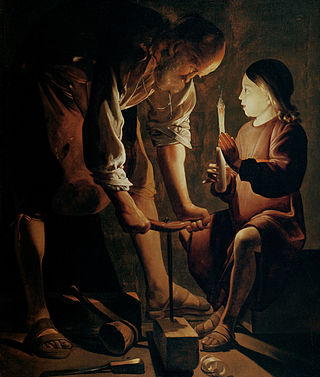
Georges de La Tour was a French Baroque painter, who spent most of his working life in the Duchy of Lorraine, which was temporarily absorbed into France between 1641 and 1648. He painted mostly religious chiaroscuro scenes lit by candlelight.

French art consists of the visual and plastic arts originating from the geographical area of France. Modern France was the main centre for the European art of the Upper Paleolithic, then left many megalithic monuments, and in the Iron Age many of the most impressive finds of early Celtic art. The Gallo-Roman period left a distinctive provincial style of sculpture, and the region around the modern Franco-German border led the empire in the mass production of finely decorated Ancient Roman pottery, which was exported to Italy and elsewhere on a large scale. With Merovingian art the story of French styles as a distinct and influential element in the wider development of the art of Christian Europe begins.

Maurice Boitel was a French painter.
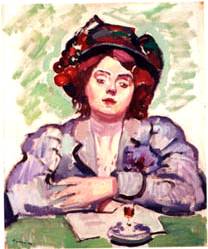
Charles Camoin was a French expressionist landscape painter associated with the Fauves.

Jean-Michel Moreau, also called Moreau le Jeune, was a French draughtsman, illustrator and engraver.

Louis Candide Boulanger was a French Romantic painter, pastellist, lithographer and a poet, known for his religious and allegorical subjects, portraits, genre scenes.
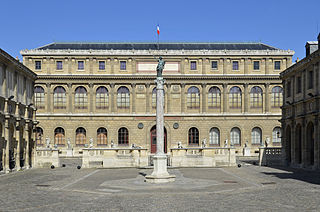
École des Beaux-Arts refers to a number of influential art schools in France. The term is associated with the Beaux-Arts style in architecture and city planning that thrived in France and other countries during the late nineteenth century and the first quarter of the twentieth century.
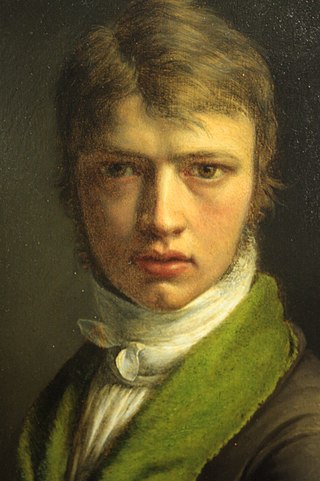
Fleury François Richard, sometimes called Fleury-Richard, was a French painter of the Lyon School. A student of Jacques-Louis David, Fleury-Richard and his friend Pierre Révoil were precursors of the Troubadour style.

Henri Richelet was a French painter.

Pieter van Mol or Peter van Mol was a Flemish painter known for his history paintings of religious subject matter, and to a lesser extent for his allegorical compositions, genre scenes and portraits. His style was profoundly influenced by Rubens, Abraham Janssens and Artus Wolffort. He was court painter to the King and Queen of France.

Léon Printemps was a French artist known best for his work as a portrait and landscape painter.

Anicet Charles Gabriel Lemonnier was a well-known French painter of historical subjects who was active before, during and after the French Revolution.
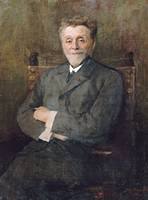
Léonce Bénédite was a French art historian and curator. He was a co-founder of the Société des Peintres Orientalistes Français and was instrumental in establishing Orientalist art as a legitimate genre.
Jules Gustave Besson was a French painter. He was a pupil of Alexandre Cabanel, Élie Delaunay, and particularly Gustave Moreau at the Beaux-Arts, Paris, but did not follow his teacher's style.

Camille Hilaire was a French painter and weaver from Metz. He attended the École des Beaux-Arts in Paris during World War II and was also tutored by André Lhote.
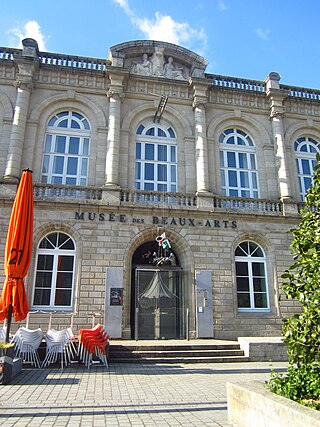
The Musée des Beaux-Arts de Quimper is an art museum located in Quimper, Brittany, France. It was founded after Jean-Marie de Silguy (1785-1864) left a legacy of 1200 paintings and 2000 drawings to the town of Quimper on condition that the town build a museum to accommodate them. Today, it is one of the principal art museums in western France, presenting rich collections of French, Italian, Flemish, and Dutch paintings from the 14th century to present day.

Raymond Emmanuel Woog was a French painter, designer and illustrator.